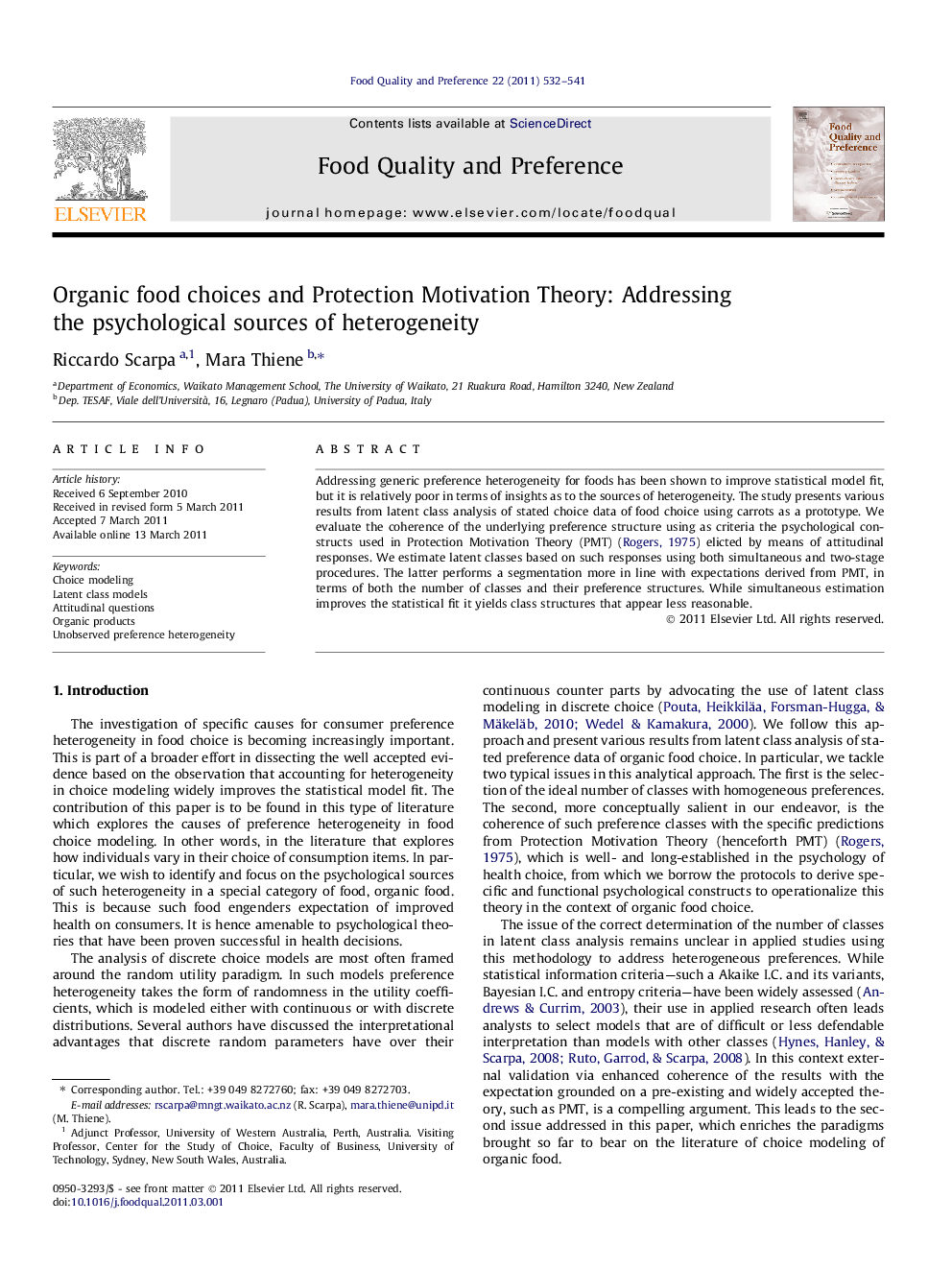| Article ID | Journal | Published Year | Pages | File Type |
|---|---|---|---|---|
| 4317715 | Food Quality and Preference | 2011 | 10 Pages |
Addressing generic preference heterogeneity for foods has been shown to improve statistical model fit, but it is relatively poor in terms of insights as to the sources of heterogeneity. The study presents various results from latent class analysis of stated choice data of food choice using carrots as a prototype. We evaluate the coherence of the underlying preference structure using as criteria the psychological constructs used in Protection Motivation Theory (PMT) (Rogers, 1975) elicted by means of attitudinal responses. We estimate latent classes based on such responses using both simultaneous and two-stage procedures. The latter performs a segmentation more in line with expectations derived from PMT, in terms of both the number of classes and their preference structures. While simultaneous estimation improves the statistical fit it yields class structures that appear less reasonable.
► We investigate preference heterogeneity for food by means of latent class models. ► We evaluate preference structure using psychological constructs of Protection Motivation Theory. ► We estimate latent classes using both simultaneous and two-stage procedures.
